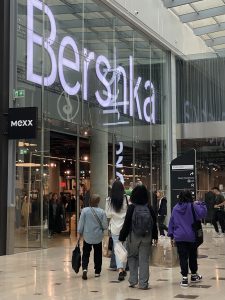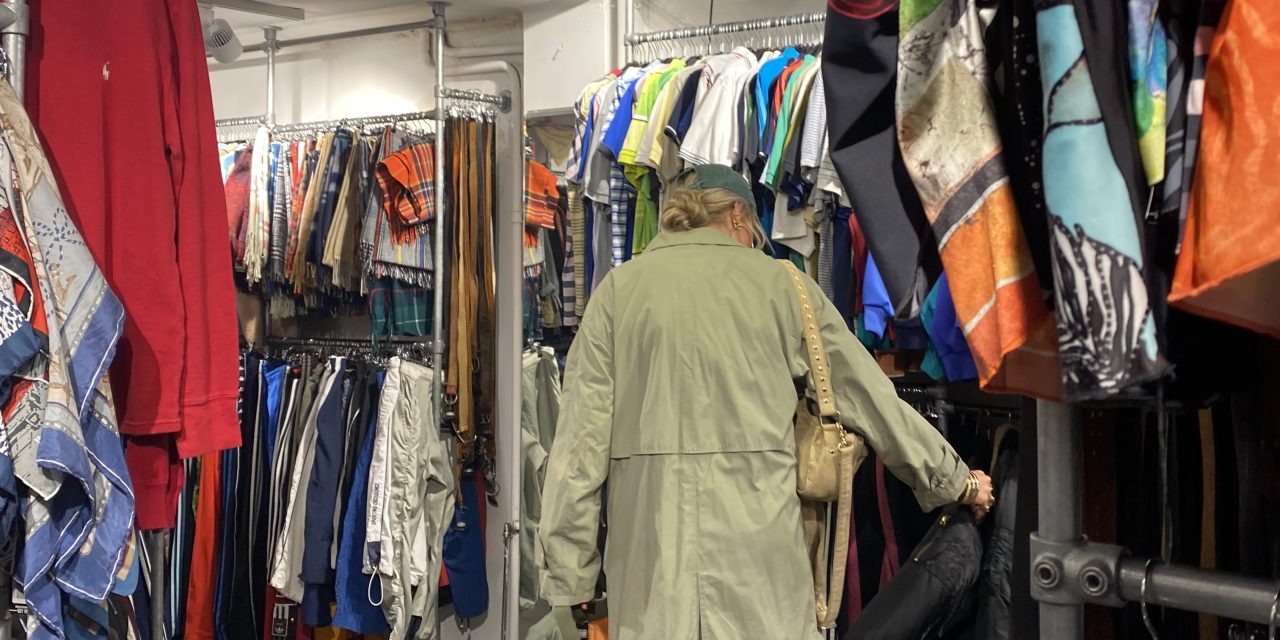In recent years, the fashion industry has experienced a dynamic transformation, with sustainable fashion gaining popularity and thrift shopping becoming a mainstream choice. Simultaneously, the fast fashion industry remains as strong as ever, pushed by the influential role of social media platforms. This polarization leaves us questioning ourselves, “Who is the winner in the battle that is the fashion industry right now?”
Sustainable fashion and the Thrift Shopping Revival
Thrifting, once associated with budget-conscious shoppers, has undergone a significant transformation. It is now popular among a wider range of consumers, “the interest in sustainable fashion has definitely increased, there are more customers every day and they ask you about more stores, especially women from very different ages” explains a thrift store worker. Thrift shops and second-hand stores are becoming go-to destinations for fashion fans looking for vintage gems and budget-friendly finds “our clients search for something unique, something that sets them apart from other people and they also look for something affordable”.
Fashion for good museum’s host Djamila states, “The thriving second-hand shopping scene is a proof of growing global interest in sustainable fashion. Aside from that, initiatives like clothing swaps, innovative dye production methods, and cycling-friendly infrastructure contribute to more sustainable shopping experiences”.
Fast Fashion’s Resilience and The Influence of Social Media
While sustainable fashion gains ground, fast fashion continues to thrive, thanks in part to its prominent presence on social media. Platforms like Instagram and TikTok have been vital in shaping the industry, but they have also raised some concerns about their impact since brands like Zara, H&M, and Forever 21 have harnessed the power of these platforms to maintain their po pularity. Especially in Tik Tok, we can see a rise in microtrends—short-lived but intensely popular fashion phenomena. Users can create these micro trends that gain rapid attention, leading to increased consumption. The ‘buy and discard’ culture is perpetuated as users chase the latest trend.
pularity. Especially in Tik Tok, we can see a rise in microtrends—short-lived but intensely popular fashion phenomena. Users can create these micro trends that gain rapid attention, leading to increased consumption. The ‘buy and discard’ culture is perpetuated as users chase the latest trend.
Conversely, social media can also be a force for good in promoting sustainability in fashion. Many influencers and advocates use these platforms to champion ethical practices, responsible consumption, and sustainable brands. Djamila explains “Social media is a driving force for fast fashion. It promotes trends, consumerism, and the culture of ‘haul’ videos. However, it’s also a shared responsibility. Consumers can choose who they follow and opt for positive role models who advocate sustainable practices.”
So, who is wining?
In the ever-evolving fashion landscape, the influence of social media on consumer behavior is undeniable. While platforms like Instagram and TikTok can promote micro trends and consumerism, they can also encourage sustainable choices and authenticity. It all depends on who users choose to follow. Fast fashion remains a formidable force, driven by profit and consumer demand. However, with the rise of sustainability-focused initiatives, the fashion industry is gradually shifting towards more ethical and responsible practices. These changes offer hope for the future of sustainable fashion.
Djamila sums it up, “Fast fashion may still be winning the battle, but the growing interest in sustainable fashion presents good competition. The future of fashion may be more sustainable than we imagine. The power lies with consumers. To create a meaningful change in the fashion industry, individuals must embrace a conscious approach to shopping. This means making better choices, supporting sustainable brands, and recognizing that ‘more’ is not always ‘better.'”




